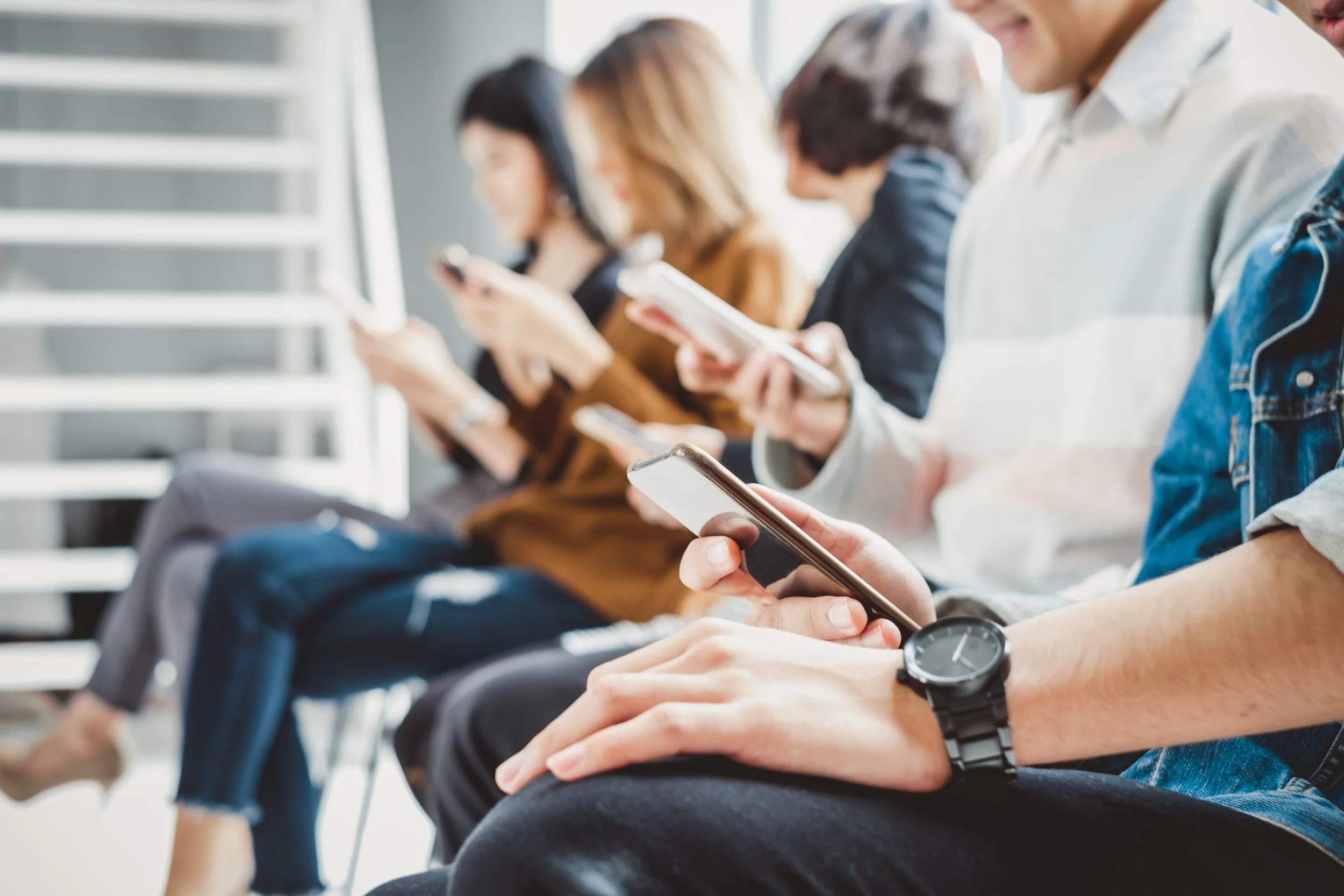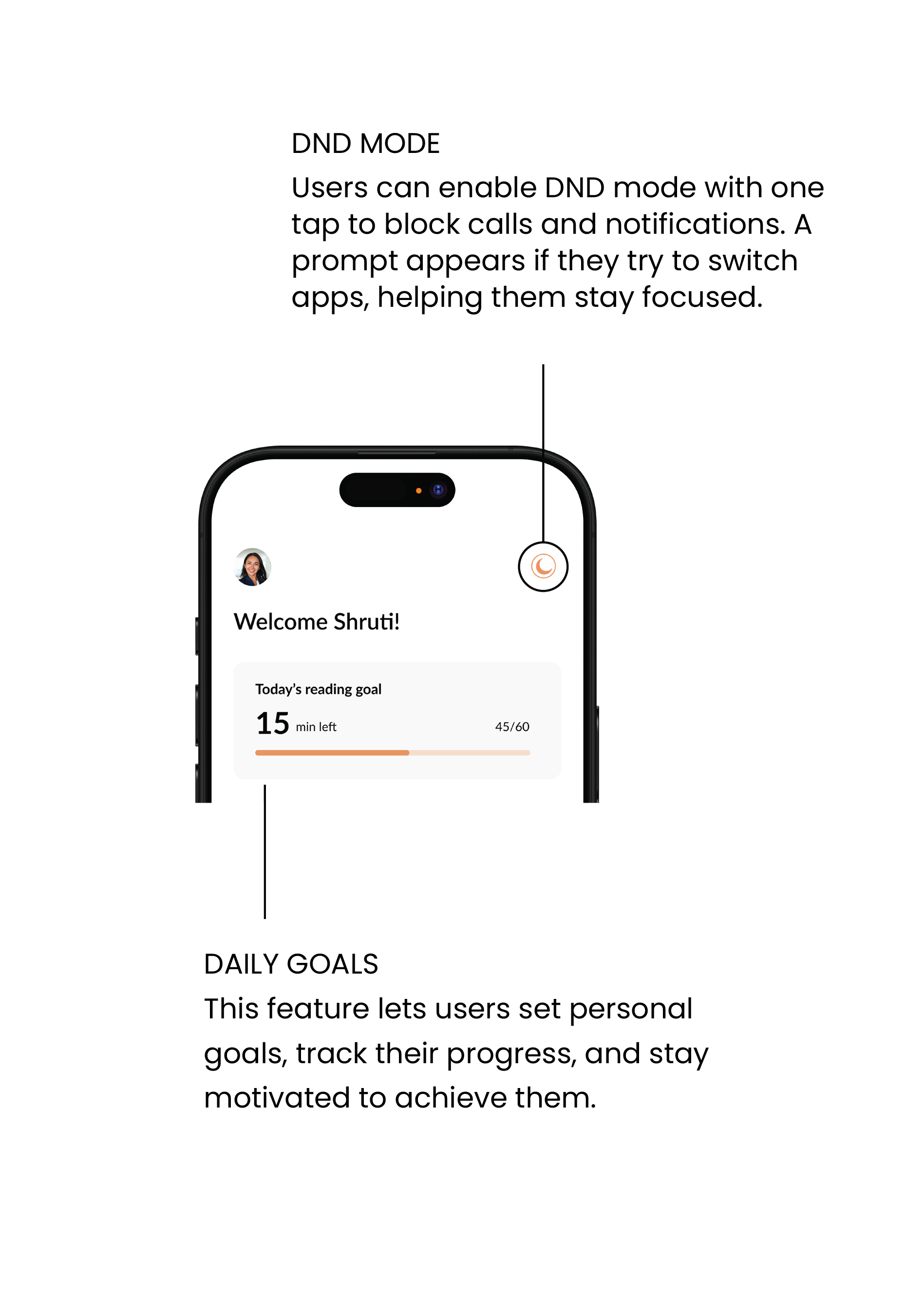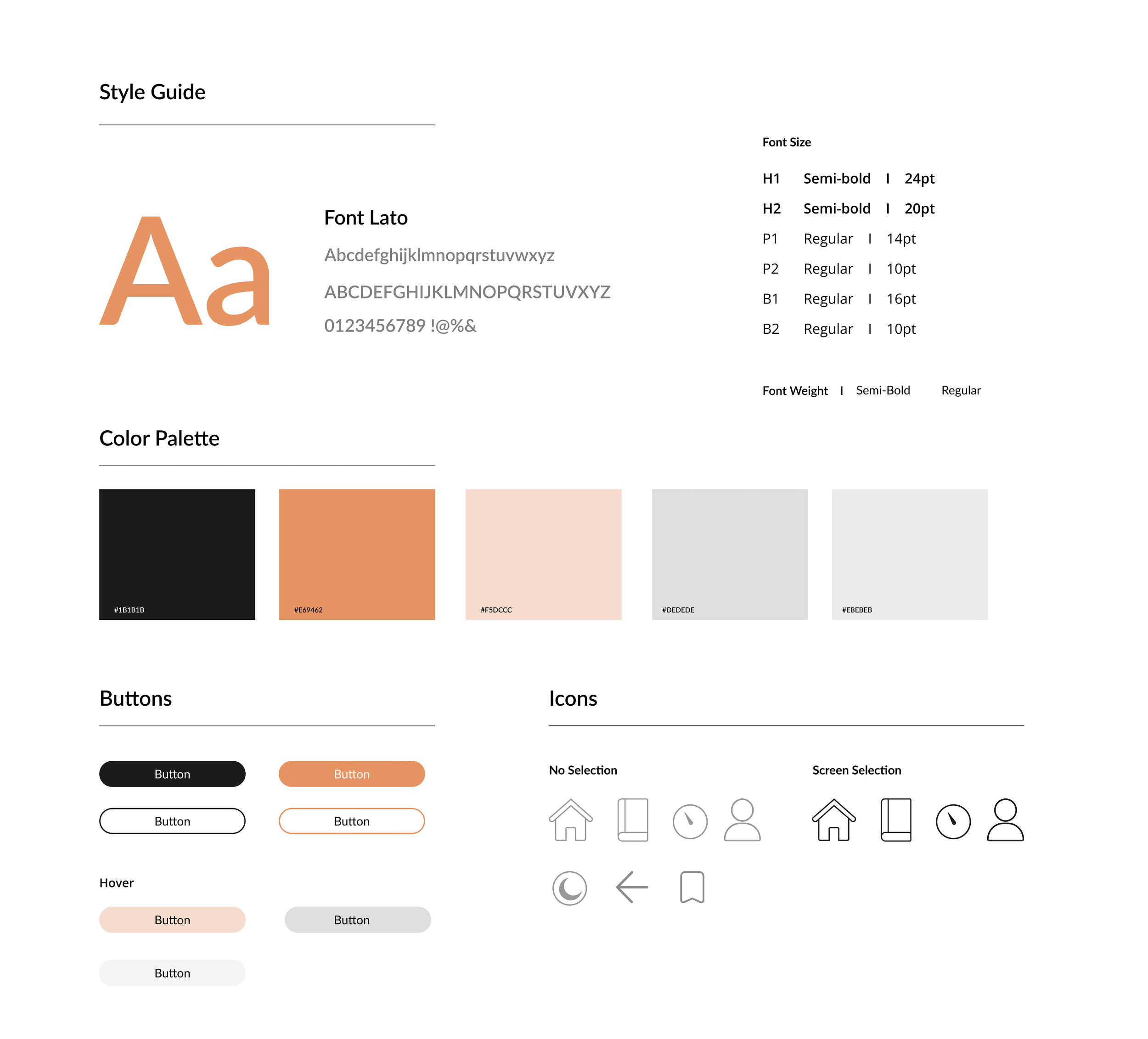Reada
Reada is an AI-powered reading platform that allows users to personalize their reading space based on their habits, goals, and interests. It is designed to engage users and support in building reading habits in today’s fast-paced world by empowering individuals to shape their own unique journey.
Tools:
Figma, v0 Ai,
Adobe Illustrator, InDesign,
Adobe Photoshop
Category:
Product Design
UX/ UI Design
Design Strategy
01
Problem
In today’s fast-paced digital world, reading is rapidly declining. The constant pull of social media, content overload, and the demand for instant gratification have eroded our ability to focus and be patient. This shift has far-reaching consequences right from reduced literacy rates, weakened critical thinking, and hindered cognitive development. Reading isn’t just a habit, it’s a foundational skill that shapes how we learn, connect, and grow. Its decline signals a growing crisis in how we engage with knowledge and ourselves.
02
Reference at the end of the project
Reading has seen a steep decline in recent decades, with nearly a 50% drop this century. 89% of respondents believe social media has negatively influenced children’s reading habits, further accelerating this downward trend.
Decline in reading
Regular reading strengthens brain connectivity, improves memory, and builds critical thinking and analytical abilities. The decline in reading directly limits these essential aspects of cognitive development.
Impact on Cognitive Development
03
Unlike quick digital consumption, reading builds focus, reflection, and mindfulness, qualities now fading in today’s distraction-heavy world, leading to shorter attention spans and weaker communication.
Weak Communication & Attention
Research Question
How might we design to encouraging people to build a sustainable reading habit
Ecosystem Map
User Interviews
Persona
Competitors
Amazon Kindle offers a vast digital library that syncs across multiple devices.
However, it falls short in offering features that engage users in today’s fast-paced digital environment. Additionally, it lacks tools or strategies to actively support and nurture consistent reading habits.
An ecosystem map that visualizes the interconnected elements that influence users' reading habits highlighting key aspects that shape the reading journey and experiences.
Libby provides e-books and audio books to rent for free.
However, access is limited to the offerings of individual libraries, often leading to long wait times. Not all titles are available digitally, which can restrict accessibility.
Kobo offers a wide range of e-books and audiobooks, similar to Kindle.
However, it lacks personalization features, user engagement, and tools to retain users. It doesn’t fully address the evolving needs of modern readers.
Key Insights
Opportunities
Empower readers to create personalized spaces and experiences they can call their own.
Support readers with small, achievable goals that build consistent reading habits step by step.
Offer short, quick reads that fit into daily routines without requiring long-term commitment.
Provide a digital library offering flexible choices tailored to their mood and energy levels.
Design immersive reading experiences that redefine reading as engaging, rewarding, and experiential.
The dominance of social media and fast content has reduced patience for long-form reading, leading to disengagement.
Carrying multiple heavy books makes it inconvenient to read on the go.
In the digital era, constant notifications and content overload often distract readers, leading to a loss of interest.
Limited time makes it difficult for many to commit to long books.
Reading is highly individual, preferences differ from environments, focus levels, and types of content.
Design Concept
THE WHAT
THE HOW
Personalisation
Reading is an inherently personal experience. From interviews and research, it's clear that individuals engage with reading in unique ways, each with their own preferences, routines, and motivations.
AI integration
Using AI to craft a personalized reading environment that adapts to each user’s goals, habits, and needs. This tailored approach not only supports users in building reading habits but also empowers them to shape their reading journey.
Design Process
Low to High fidelity Prototype
Figma Prototyping
AI Explorations - v0 ai
Final Design
Information Architecture
Style Guide
Personalization
The AI-powered quiz tailors a reading space based on your goals and preferences, empowering the user to create a journey that’s uniquely theirs.
Achieve your goal
Quick Reads
Ideation
Customized Library
Immersive Reading
The low-fidelity prototype established the foundational visual structure and design context of the product. As the design language evolved into higher fidelity, key details such as imagery, spacing, typography, and information hierarchy were refined to enhance experience and usability.
The app helps users set small, achievable goals to build a consistent and lasting reading habit. It features a simplified landing page that highlights the daily goal and the book in progress, reducing clutter and avoiding information overload.
Sketched concepts and user flows to explore and define the user experience.
This feature offers flexibility by letting users enjoy shorter reads without the pressure of finishing a full book. It supports consistency through small-sized content that fits into even the busiest schedules and is perfect for when you only have a few minutes to spare.
An AI-curated library catered to the user’s interests that helps reduce overwhelm from too many choices. By offering focused suggestions, it keeps users engaged and motivated without the burden of endless scrolling.
This feature adds an interactive layer using visuals, sound, and motion to engage users who avoid text-heavy content. It makes reading feel more dynamic, enjoyable, and accessible, especially for those who prefer a sensory or immersive experience.
Design Goal
Reflections
Why is this important?
Takeaways
Reading plays an important role in our life. It is what has driven humans forward, increased literally all around the world, build focus and patience. Today’s fast paced world is living and breathing on social media and content overload. It is alarming that the content that we are consuming is at such a surface level.
This project is aims to bring back reading habits by understanding current needs and user behaviors and offering solutions that would engage and empower the users to build their reading journey.
One size doesn’t always fit all
User interviews played a crucial role in the research process. Reading habits vary widely from person to person, influenced by factors like personal interests, literacy levels, and daily routines. This highlighted the importance of moving beyond personal bias and engaging directly with users to deeply understand their unique challenges, motivations, and needs.
Experience Sells
A concept can’t be communicated through words alone. While verbal explanations are useful, they often fall short in conveying the bigger picture, especially in design. Visuals, prototypes, and interactive elements were essential tools for bringing the abstract concepts to life. It help in understanding better, spark feedback, and allow the users to experience the idea rather than just hear about it.
References:
1. janine. 2024. “Impact of Digital Media on Children’s Reading Habits.” Tutor Doctor (blog). May 10, 2024. https://tutordoctor.com.au/blog/impact-of-digital-media-on-childrens-reading-habits/.
2. Perrin, Risa Gelles-Watnick and Andrew. 2021. “Who Doesn’t Read Books in America?” Pew Research Center (blog). September 21, 2021. https://www.pewresearch.org/short-reads/2021/09/21/who-doesnt-read-books-in-america/.
3. “The End of Reading - The Ringer.” n.d. Accessed June 25, 2025. https://www.theringer.com/podcasts/plain-english-with-derek-thompson/2025/02/28/the-end-of-reading.
4. National Literacy Trust (UK)
5. Wolf, M. (2007). Proust and the Squid: The Story and Science of the Reading Brain*
6.: Maryanne Wolf, "Reader, Come Home" (2018)




























